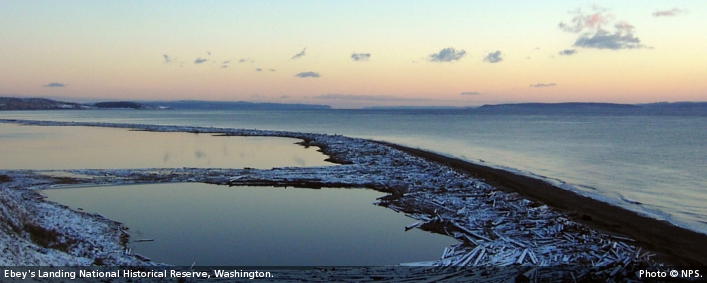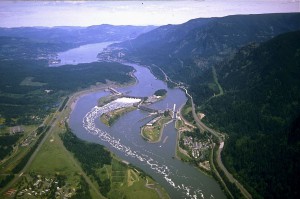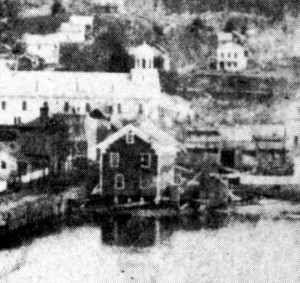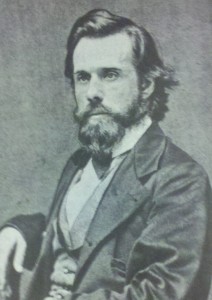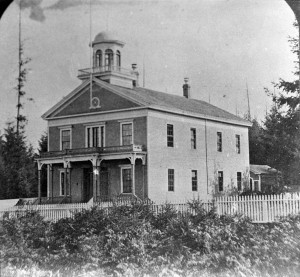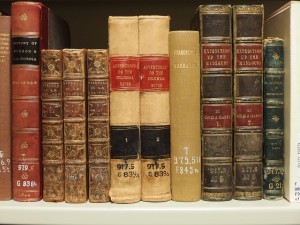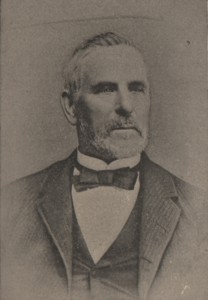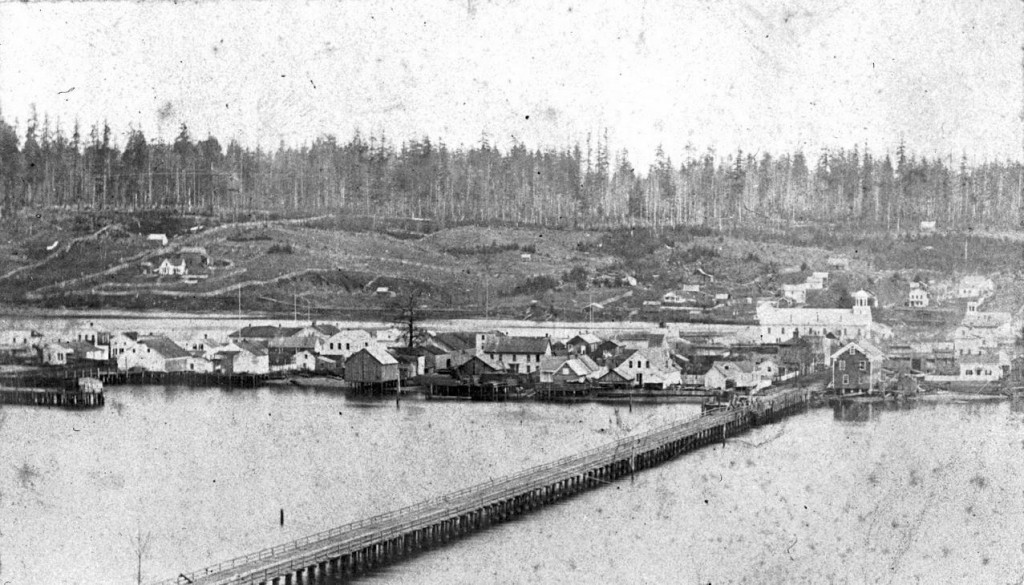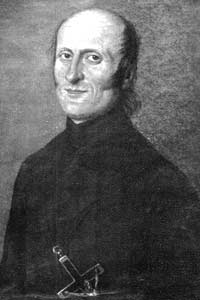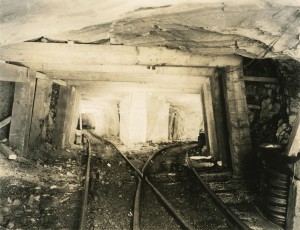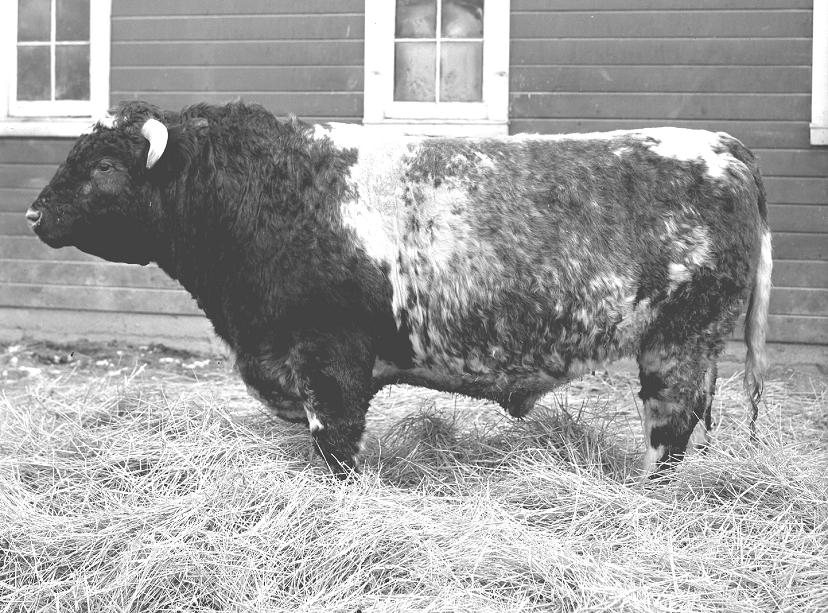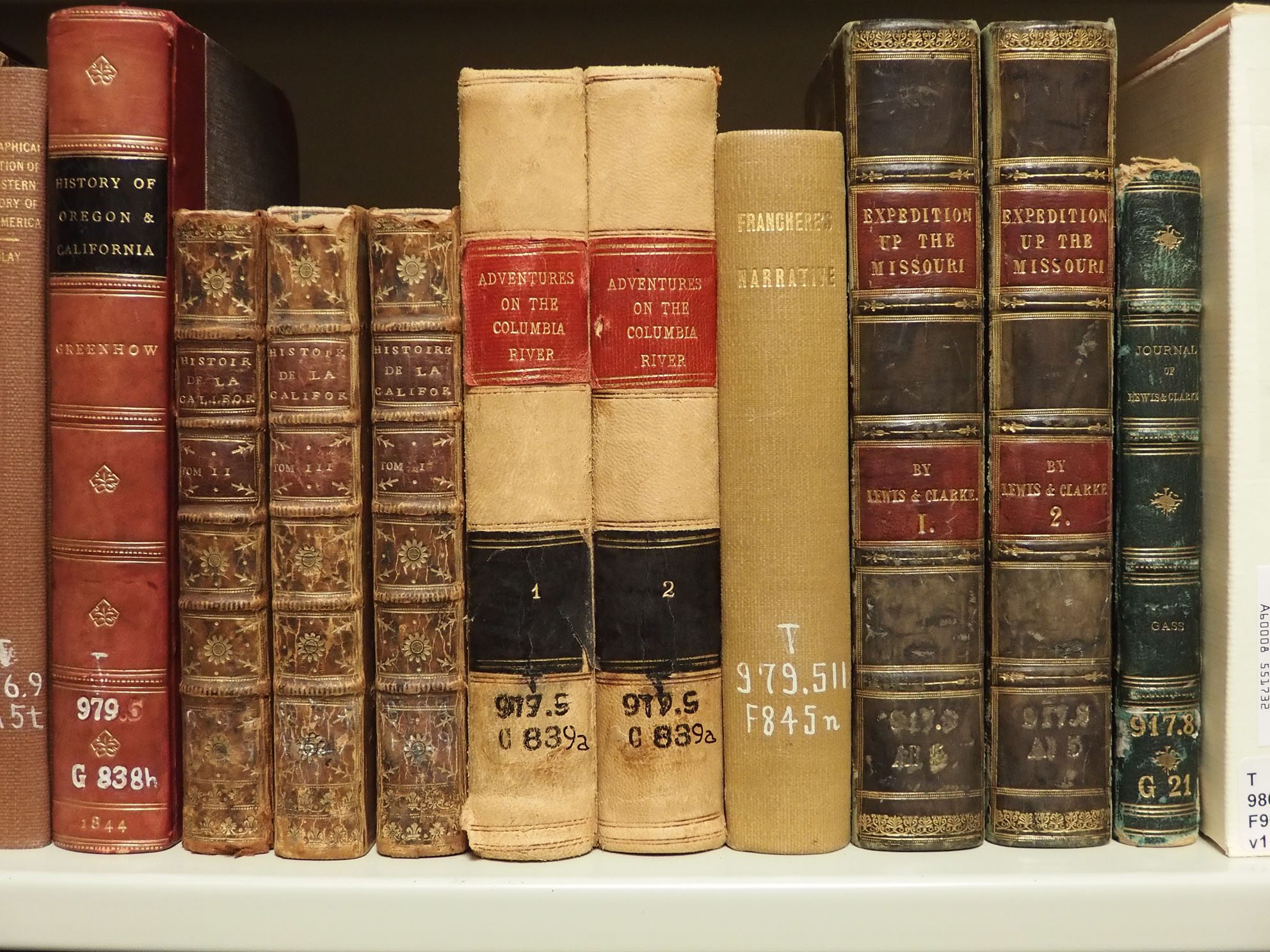 From the desk of Sean Lanksbury. PNW & Special Collections Librarian
From the desk of Sean Lanksbury. PNW & Special Collections Librarian
This weekend, C-SPAN Cities will be featuring a block of programming on the history and the literary culture of Olympia on its American History TV and Book TV specials. Individual segments featured in the block will also air in between other programs throughout the weekend. Each segment deals with a single topic, such as local authors, notable political figures, historic industries, plus visits to literary and historical sites. Among those featured during Book TV’s block on Olympia literary culture and history is the Territorial Collection of the Washington State Library, maintained at the Central Branch in Tumwater, WA, just south of Olympia.
Book TV’s Olympia block will air Saturday, February 1st at 9am (PST) and again on Sunday, February 2nd at 6:45am (PST) on C-SPAN2. American History TV’s Olympia block airs on Sunday , February 2 at 2pm PST. (Check your local listings for availability)
Read below for additional details, courtesy of C-SPAN:
“OLYMPIA WEEKEND
Featured on Book TV and American History TV
Weekend of February 1-2, 2014
Hosted by our Comcast cable partners, our C-SPAN Cities Tour staff visited numerous locations to explore the history and literary culture of Washington’s capital city.
In addition to having the below pieces sprinkled in throughout the weekend on the respective networks, both AHTV and BOOK TV will have a block of programming where ALL of the respective Olympia pieces for their networks will air.
BOOK TV OLYMPIA BLOCK: SATURDAY, February 1 at 9am PT/12pm ET on C-SPAN2 (Comcast Ch: 25)
AHTV OLYMPIA BLOCK: SUNDAY, February 2 at 5pm ET on C-SPAN3 (Comcast Ch: 150)
AHTV FEATURES
- Tour the Washington State Capitol Building with Tour Guide David Shipley. Learn about the history of Olympia as the state’s only capital city. Hear about Washington’s transition from a territorial government to becoming a state, its historical significance and the damage caused by two earthquakes since the building was built. See the granite halls of this historic building and view its extensive Tiffany collection.
- Learn about the Boldt Decision, which secured Native American’s fishing rights on the Puget Sound in the 1970s. During the 20th century Native Americans were arrested and jailed for fishing salmon in certain parts of the Puget Sound. Washington State claimed their fishing activities were eroding the fish supply. The Native Americans argued they had a right to fish these lands under the Medicine Creek Treaty, signed in 1854. Hear former Washington State Supreme Court Justice Gerry Alexander explain the origins of the treaty and the events leading to the Boldt Decision, and Nisqually tribal member and activist Billy Frank Jr. share his stories and thoughts on what many call the landmark civil rights issue of the Pacific Northwest.
- Learn about naturalist and explorer David Douglas, the namesake for the Douglas Fir Tree. Douglas, a Scottish botanist, explored North America and Hawaii in search of plants that could be grown in his native land. Jack Nisbet, author of “The Collector” talks about Douglas’ adventures, and showcases Douglas’ findings which were part of the first systematic collection of flora and fauna in the Northwest
- See the Murrow Brothers Exhibit at the State Capitol Museum. Susan Rohrer, Manager of the State Capitol Museum, showcases the traveling exhibit that explains the lives of the three Murrow brothers, including Edward R. Murrow, who grew up in Washington’s Skagit (SKAA-git) County. See photos of the men throughout their lives and hear how each contributed to Washington State and to the country.
- Tour Taylor Shellfish and learn about the history of the Olympia Oyster. Hear local historian Ed Echtle talk about the origins of Olympia’s shellfish industry and the impact oyster harvesting has had on the Puget Sound and the rest of the country. Taylor Shellfish’s Sustainability Manager, Marco Pinchot takes us on a tour of one of their processing plants, and talks about the health of the Puget Sound today.
- Visit the Bigelow House, one of the oldest homes in Olympia. Explore this historic home with local historian Shanna Stevenson. Hear about Daniel and Ann Elizabeth Bigelow’s ties to the early settlement in Olympia, their relationship with Susan B. Anthony, and their fight to get women the right to vote.
- Hear Governor Jay Inslee (D) talk about the state’s economy and the impact of recent legislation.
- See the Grand Coulee to Grunge Exhibit at the Washington State Capitol. Washington Secretary of State Kim Wyman takes us through the exhibit and highlights several innovations from Washington that have changed the world— the timber industry, the Grand Coulee Dam, the Hanford plutonium production site, Boeing, the music industry and more.
Book TV FEATURES
- Learn about the Marbled Murrelet and the litigation surrounding its habitat from author Maria Mudd Ruth, author of “Rare Bird: Pursuing the Mystery of the Marbled Murrelet.”
- Hear author S.R. Martin, Jr. recount his families migration during the 1940’s from East Texas to San Francisco by way of Wyoming and Montana. In his book, “On the Move: A Black Family’s Western Saga,” Martin compares his childhood growing up in Wyoming and Montana to those of his relatives who remained in the Jim Crow south.
- Learn about the maritime history of the Puget Sound from author and historian, Chuck Fowler author of “Tall Ships on Puget Sound.” From the first 18th century explorers to the barges that populate the Puget Sound today, Fowler explores its role in the development of the Pacific Northwest region.
- Tour the Special Collections of the Washington State Library with Special Collections Librarian Sean Lanksbury. Housed within the collection are 900 rare books purchased by Washington’s first governor, Isaac Stevens. Governor Stevens purchased the books to create a makeshift library for the people of the newly formed state.
- Learn about Washington State’s 2004 gubernatorial race between Dino Rossi and Christine Gregoire from Trova Heffernan, author of “An Election for the Ages.” At the conclusion of election night, out of 2.8 million votes, only 261 separated the candidates. After two recounts and multiple lawsuits, Gregoire was declared the winner by 133 votes. In “An Election for the Ages,” Heffernan talks about the media frenzy surrounding the case and its impact on Washington politics. We also hear from Sam Reed, who was Washington’s Secretary of State during this election.
- Hear about naturalist and explorer David Douglas, the namesake for the Douglas Fir Tree. Douglas, a Scottish botanist, explored North America and Hawaii in search of plants that could be grown in his native land. Jack Nisbet, author of “The Collector” talks about Douglas’ adventures, and showcases Douglas’ findings which were part of the first systematic collection of flora and fauna in the Northwest
For more information on the C-SPAN Cities Tour of U.S. cities, go to www.c-span.org/localcontent.”






